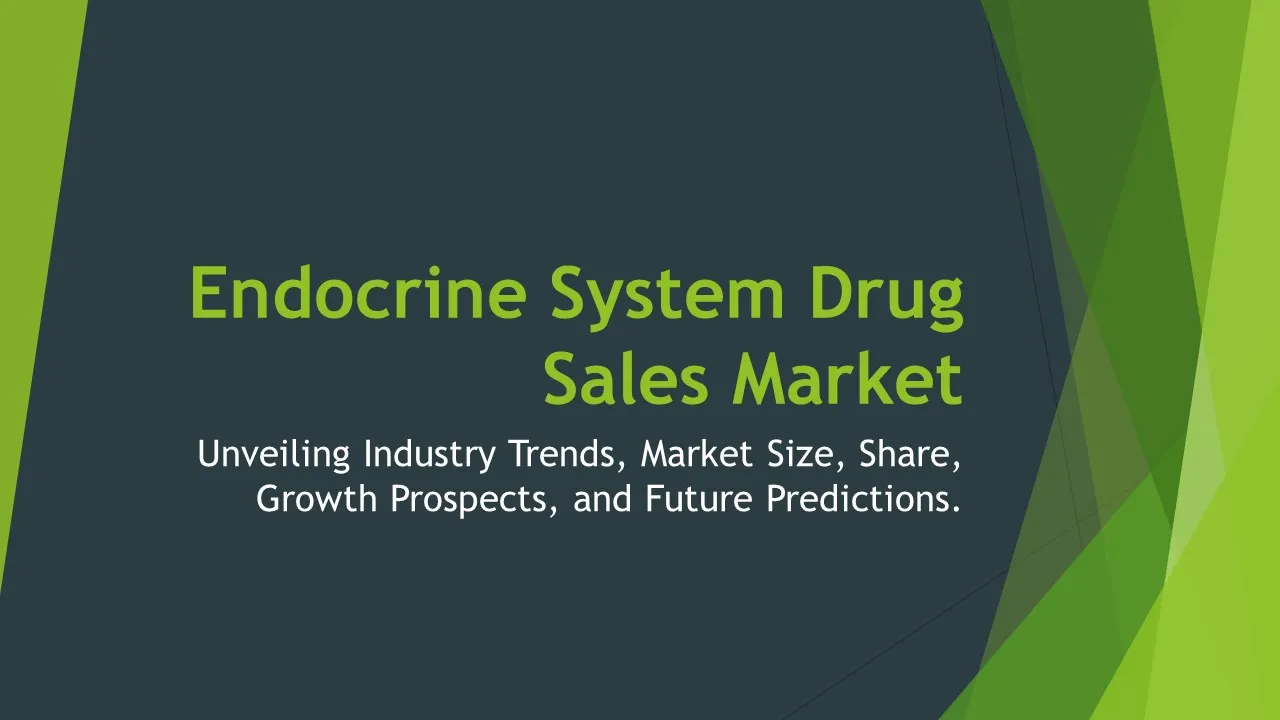Pharmaceutical Drug Delivery Technologies
Pharmaceutical Drug Delivery Technologies Market Segments - by Product Type (Oral Drug Delivery, Injectable Drug Delivery, Topical Drug Delivery, Pulmonary Drug Delivery, Transdermal Drug Delivery), Application (Oncology, Diabetes, Cardiovascular Diseases, Central Nervous System Disorders, Infectious Diseases), Distribution Channel (Hospital Pharmacies, Retail Pharmacies, Online Pharmacies), Technology (Nanotechnology, Microfluidics, Implants, Targeted Drug Delivery Systems, Liposomes), and Region (North America, Europe, Asia Pacific, Latin America, Middle East & Africa) - Global Industry Analysis, Growth, Share, Size, Trends, and Forecast 2025-2035
- Report Preview
- Table Of Content
- Segments
- Methodology
Pharmaceutical Drug Delivery Technologies Market Outlook
The global pharmaceutical drug delivery technologies market is projected to reach USD 1,500 billion by 2035, growing at a CAGR of 8.5% from 2025 to 2035. This substantial growth can be attributed to the increasing prevalence of diseases requiring advanced therapeutic technologies, a growing elderly population, and significant investments in biotechnology and pharmaceutical research and development. In addition, the surge in demand for effective drug delivery systems is being driven by the rising need for targeted therapies and personalized medicine. Furthermore, the expansion of online pharmacies and advancements in drug formulation technologies are contributing to market growth, enhancing accessibility and efficiency in drug delivery systems. As the healthcare landscape evolves, the focus on ensuring patient adherence to medication regimens will further influence this market positively.
Growth Factor of the Market
One of the primary growth factors for the pharmaceutical drug delivery technologies market is the rapid advancements in drug formulation and delivery systems that have significantly improved patient outcomes. The evolution of precision medicine, coupled with the demand for personalized drug delivery solutions, is reshaping the pharmaceutical landscape. Moreover, the integration of nanotechnology and microfluidics in drug delivery is enhancing the efficacy of treatments while minimizing side effects, thereby increasing product adoption. The rising incidence of chronic diseases such as cancer and diabetes necessitates innovative delivery methods that can ensure sustained and targeted drug administration, contributing to market expansion. Additionally, the growing prevalence of lifestyle-related diseases has led to an increase in the development of advanced drug delivery systems tailored to individual patient needs. This shift towards a more patient-centric approach in pharmacotherapy is a pivotal factor driving market growth.
Key Highlights of the Market
- The market is witnessing a significant rise in the adoption of injectable drug delivery technologies due to their effectiveness in delivering biologics.
- Online pharmacies are emerging as a popular distribution channel, driven by the convenience of purchasing medications from home.
- Nanotechnology is leading the technological advancements in drug delivery, providing opportunities for targeted therapies.
- Oncology applications are expected to dominate the market as the demand for cancer treatments continues to rise.
- The Asia Pacific region is anticipated to exhibit the highest CAGR during the forecast period, fueled by increasing healthcare spending and a large population base.
By Product Type
Oral Drug Delivery:
Oral drug delivery remains the most prevalent method of drug administration due to its ease of use and patient acceptance. This segment includes traditional tablets and capsules, as well as advanced delivery systems such as controlled-release formulations. The demand for oral drug delivery systems is driven by the convenience they offer to patients, allowing for self-administration without the need for medical personnel. Furthermore, innovations such as orally disintegrating tablets and liquid formulations are expanding the applications of oral delivery, making it suitable for various therapeutic areas, including chronic diseases. The ongoing research into enhancing bioavailability and patient compliance is expected to bolster this segment's growth in the coming years, particularly as personalized medicine becomes more mainstream.
Injectable Drug Delivery:
Injectable drug delivery systems are gaining popularity due to their ability to provide rapid therapeutic effects and improved bioavailability for certain drugs. This segment encompasses various forms, including traditional syringes, prefilled syringes, and auto-injectors, which are particularly beneficial for chronic disease management. The growth of this market is propelled by the rising prevalence of conditions such as diabetes and cancer, which often require regular drug administration. Innovations in this sector, such as smart injectables and implantable devices, are enhancing patient adherence and overall treatment outcomes. Additionally, the increasing demand for biologics, which often need injectable delivery, is likely to further drive the growth of this segment in the pharmaceutical drug delivery technologies market.
Topical Drug Delivery:
Topical drug delivery systems are designed for the local application of medications directly onto the skin or mucosal membranes. This method allows for targeted treatment of skin disorders and localized pain management, making it a preferred choice for dermatological conditions. The increasing incidence of skin diseases, such as psoriasis and eczema, is driving demand in this segment. Moreover, innovations in formulations, such as gels, creams, and patches that enhance drug penetration and bioavailability, are further fueling growth. The convenience and non-invasiveness of topical applications also contribute to their popularity among patients, as they are easier to use and often come with fewer systemic side effects compared to other delivery methods.
Pulmonary Drug Delivery:
Pulmonary drug delivery systems are primarily used for the treatment of respiratory diseases, including asthma and chronic obstructive pulmonary disease (COPD). This approach offers several advantages, such as rapid absorption through the pulmonary epithelium and reduced systemic side effects. The increasing prevalence of respiratory conditions globally is driving significant growth in this market segment. Furthermore, advancements in inhalation technology, including metered-dose inhalers and nebulizers, are enhancing the effectiveness and ease of use of pulmonary drug delivery systems. Research into precision dosing and new formulations that can improve patient adherence is expected to significantly contribute to the expansion of this segment in the pharmaceutical drug delivery technologies market.
Transdermal Drug Delivery:
Transdermal drug delivery systems involve the application of drugs through the skin for systemic effects, providing a non-invasive alternative to oral or injectable administration. This method offers several advantages, including improved patient compliance and controlled release of medications. The growth of this segment is being driven by the increasing incidence of chronic diseases that require sustained therapeutic effects, such as pain management and hormone replacement therapies. Innovations in transdermal patches and microneedles are enhancing the efficiency and effectiveness of this delivery method. The development of new formulations that enhance drug permeability across the skin barrier is also contributing to the growth of transdermal drug delivery technologies, making them an attractive option for both patients and healthcare providers.
By Application
Oncology:
Oncology applications are anticipated to lead the pharmaceutical drug delivery technologies market, driven by the increasing incidence of cancer worldwide. The demand for effective drug delivery systems that can target tumors while minimizing damage to surrounding healthy tissues is paramount. As targeted therapies and immunotherapies gain popularity, the need for advanced drug delivery technologies that can enhance the efficacy of these treatments is becoming critical. Innovations such as nanoparticles and liposomes are being developed to improve the bioavailability and specificity of anticancer drugs, thereby improving patient outcomes. Furthermore, the rise in personalized medicine is influencing the development of tailored drug delivery systems that can adapt to individual patient profiles in oncology treatments.
Diabetes:
The diabetes segment is experiencing significant growth due to the rising prevalence of the disease globally and the increasing need for effective management solutions. Drug delivery technologies such as continuous glucose monitoring systems and smart insulin pens are becoming increasingly popular among patients. These advancements not only improve patient adherence to medication regimens but also provide better control over blood glucose levels. Moreover, the development of oral and inhalable insulin formulations is expanding the options available for diabetes management, making treatment more convenient for patients. As innovations continue to emerge, the pharmaceutical drug delivery technologies market for diabetes is projected to witness substantial growth in the coming years.
Cardiovascular Diseases:
The application of drug delivery systems in cardiovascular diseases is driven by the increasing incidence of heart-related conditions and the need for effective treatment options. Advanced drug delivery technologies can help target cardiovascular medications more precisely, thereby enhancing their efficacy and reducing side effects. The use of drug-eluting stents and biodegradable implants is gaining traction, offering innovative solutions for managing conditions such as coronary artery disease. Moreover, the development of novel formulations that improve the bioavailability of cardiovascular drugs is further fueling growth in this segment. As global awareness regarding cardiovascular health increases, the demand for efficient drug delivery systems tailored to this application will continue to rise.
Central Nervous System Disorders:
The pharmaceutical drug delivery technologies market for central nervous system (CNS) disorders is expanding due to the increasing prevalence of neurological diseases such as Alzheimer's and Parkinson's Disease. Effective drug delivery across the blood-brain barrier remains a significant challenge; however, advancements in formulation technologies are providing new opportunities to enhance drug efficacy. Techniques such as nanoparticles and targeted delivery systems are being researched extensively to improve the distribution of therapeutic agents within the CNS. As the understanding of CNS disorders deepens and innovative delivery methods are developed, this segment is expected to experience considerable growth, driven by the need for effective treatments.
Infectious Diseases:
The segment focusing on drug delivery technologies for infectious diseases is witnessing growth due to the rising incidence of infectious agents such as bacteria, viruses, and fungi. The need for efficient drug delivery systems that can provide rapid therapeutic effects is critical, particularly in the context of antibiotic resistance and emerging diseases. Innovations in formulations that enhance the bioavailability of antimicrobial agents and targeted delivery approaches are becoming increasingly significant in this area. Moreover, as global travel increases and new infectious diseases emerge, the demand for effective and efficient drug delivery technologies specifically designed for these applications will continue to rise, highlighting the importance of this segment in the overall market.
By Distribution Channel
Hospital Pharmacies:
Hospital pharmacies play a crucial role in the pharmaceutical drug delivery technologies market, particularly in providing medications to inpatients and outpatients. These pharmacies often stock a wide range of advanced drug delivery systems, including injectable and intravenous therapies. The increasing number of hospital admissions due to chronic diseases is driving the demand for effective drug delivery technologies in this channel. Additionally, hospital pharmacies are equipped with specialized pharmacy staff who can manage complex medication regimens, ensuring optimal patient outcomes. The rise in personalized medicine and targeted therapies is further enhancing the importance of hospital pharmacies in administering specialized drug delivery systems tailored to individual patient needs.
Retail Pharmacies:
Retail pharmacies serve as a primary access point for patients to obtain their medications, making them a vital distribution channel in the pharmaceutical drug delivery technologies market. The growing trend towards self-medication and the increasing prevalence of chronic diseases are driving demand in this segment. Retail pharmacies are expanding their offerings to include advanced drug delivery systems, such as auto-injectors and transdermal patches, to cater to the needs of patients seeking convenience and efficacy in their treatment options. Furthermore, the rise of pharmacy-led health services, including immunizations and chronic disease management, is further enhancing the role of retail pharmacies in the drug delivery landscape. As patient preferences continue to shift towards convenience and accessibility, retail pharmacies will remain a significant player in this market.
Online Pharmacies:
The rise of online pharmacies has transformed the pharmaceutical drug delivery technologies market by providing patients with greater access to medications and advanced drug delivery systems. The convenience of ordering medications from home and the increasing trend towards telehealth services are driving more patients to utilize online pharmacies. This distribution channel is particularly beneficial for those managing chronic conditions that require ongoing medication, as it simplifies the prescription refill process. Moreover, online pharmacies are often able to offer competitive pricing and access to a wider range of products, including specialized drug delivery systems. As e-commerce continues to grow in the healthcare sector, the role of online pharmacies in the drug delivery market is expected to expand significantly.
By Technology
Nanotechnology:
Nanotechnology is revolutionizing the pharmaceutical drug delivery landscape by enabling targeted and controlled drug release mechanisms. This technology involves engineering materials at the nanoscale to improve the bioavailability and efficacy of therapeutic agents, particularly in oncology, infectious diseases, and chronic conditions. The ability to encapsulate drugs within nanoparticles allows for improved uptake by cells and tissues, enhancing treatment outcomes. Moreover, nanotechnology-based drug delivery systems can minimize side effects by reducing drug exposure to non-targeted areas. As research continues to advance in this field, the application of nanotechnology in drug delivery is expected to grow substantially, offering innovative solutions for complex medical challenges.
Microfluidics:
Microfluidics technology is gaining traction in pharmaceutical drug delivery systems due to its ability to manipulate small volumes of fluids for precise drug formulation and delivery. This technology offers advantages such as reduced costs, enhanced efficiency in drug development, and the ability to create complex drug delivery systems that can respond to specific patient needs. Microfluidics can enable real-time monitoring of drug release profiles, allowing for the optimization of therapeutic regimens. This technology is also being explored for the development of point-of-care diagnostics and personalized medicine applications, further driving its relevance in the pharmaceutical drug delivery market. As the demand for innovative and efficient drug delivery solutions increases, microfluidics is likely to play a significant role in shaping the future landscape of this market.
Implants:
Implants are a unique technology in the pharmaceutical drug delivery market, providing sustained release of medications over extended periods. This method is particularly beneficial for patients requiring long-term therapy, such as hormonal treatments or pain management solutions. The ability to deliver drugs directly into the bloodstream or localized tissues minimizes the need for frequent dosing, enhancing patient adherence to treatment regimens. Advances in implant technologies, such as biodegradable materials and programmable drug release, are further enhancing their effectiveness and safety. As the healthcare industry continues to innovate, the use of implants as a drug delivery method is expected to grow, catering to the increasing demand for long-lasting and efficient therapeutic solutions.
Targeted Drug Delivery Systems:
Targeted drug delivery systems are gaining prominence due to their ability to deliver therapeutic agents specifically to affected tissues or cells, thereby maximizing efficacy while minimizing side effects. This approach significantly enhances the treatment of chronic diseases, particularly cancer and autoimmune disorders, where precision is crucial. By utilizing various mechanisms such as antibodies or ligands that bind to specific cell receptors, targeted drug delivery systems can improve drug distribution and bioavailability. As research progresses in this field, the development of novel targeted delivery platforms is expected to transform the treatment landscape for several diseases, making this technology a key growth driver in the pharmaceutical drug delivery technologies market.
Liposomes:
Liposomes are spherical vesicles that can encapsulate drugs, providing a promising method for drug delivery, particularly for therapeutic agents with poor water solubility. This technology enhances the bioavailability of drugs and allows for controlled release, making it especially suitable for chemotherapy and other treatments that require prolonged drug action. The biocompatibility and ability to modify liposomes for targeted delivery are increasing their appeal in the pharmaceutical industry. Furthermore, ongoing research into the optimization of liposome formulations continues to expand their applications across various therapeutic areas, thereby driving growth in the pharmaceutical drug delivery technologies market. As advancements in liposomal technology continue, they are expected to play a pivotal role in the development of next-generation drug delivery systems.
By Region
The North American pharmaceutical drug delivery technologies market is currently the largest, driven by the presence of key market players, advanced healthcare infrastructure, and significant investment in research and development. The region's focus on innovative drug delivery systems and the increasing prevalence of chronic diseases are contributing factors to its market dominance. With a projected CAGR of 9% from 2025 to 2035, the North American market is expected to continue its growth trajectory, supported by a robust regulatory framework and high healthcare expenditure. Moreover, the rising adoption of personalized medicine and targeted therapies within this region is further enhancing the demand for advanced drug delivery technologies.
In contrast, the Asia Pacific region is anticipated to emerge as the fastest-growing market for pharmaceutical drug delivery technologies, with a projected CAGR of 11% during the forecast period. This growth can be attributed to the increasing healthcare investments, the rising prevalence of chronic diseases, and a large population base. Countries such as China and India are witnessing significant improvements in healthcare infrastructure, leading to greater access to advanced drug delivery systems. Additionally, the growing emphasis on research and development in biopharmaceuticals and the adoption of telemedicine are expected to drive the demand for innovative drug delivery technologies in this region. As the healthcare landscape evolves, the Asia Pacific region is poised for substantial growth in the pharmaceutical drug delivery technologies market.
Opportunities
As the pharmaceutical drug delivery technologies market continues to evolve, there are numerous opportunities for growth driven by advancements in technology and increasing healthcare demands. One significant opportunity lies in the development of personalized medicine approaches, where drug delivery systems are tailored to individual patient needs. This shift towards precision medicine is creating a demand for innovative drug delivery solutions that can ensure optimal drug efficacy. The rise of advanced biopharmaceuticals, including monoclonal antibodies and gene therapies, is also driving the need for specialized drug delivery systems capable of delivering these complex therapies effectively. Furthermore, as the global population ages, there is a growing need for effective management of chronic diseases, creating opportunities for drug delivery technologies that can enhance patient adherence and improve therapeutic outcomes.
Another area of opportunity is the increasing focus on digital health innovations, including telemedicine and remote patient monitoring. The integration of drug delivery technologies with digital health platforms presents exciting possibilities for enhancing patient engagement and adherence to treatment regimens. For example, smart drug delivery systems equipped with monitoring capabilities can provide real-time data on patient usage and treatment efficacy, enabling healthcare providers to make informed decisions and adjustments to therapy as needed. Additionally, the expansion of online pharmacies and the growing trend of e-commerce in healthcare create new avenues for distributing advanced drug delivery systems, making them more accessible to patients. As these trends continue to unfold, they present promising opportunities for stakeholders in the pharmaceutical drug delivery technologies market.
Threats
Despite the promising growth of the pharmaceutical drug delivery technologies market, several threats could pose challenges to its expansion. One major threat is the increasing regulatory scrutiny and stringent approval processes for new drug delivery systems. Regulatory bodies globally are demanding higher standards of safety and efficacy, which can prolong the time it takes for innovations to reach the market. This can deter small and medium-sized enterprises from investing in the development of new technologies due to the associated costs and risks. Additionally, the emergence of alternative treatment options, such as gene therapy and cell-based therapies, may overshadow traditional drug delivery methods, impacting market demand. The ongoing shift towards value-based care and cost containment in healthcare could also create pressure on pharmaceutical companies to reduce pricing, which may limit revenue growth.
Another potential threat to the market is the growing prevalence of counterfeit drugs, which not only poses significant risks to patient safety but also undermines the credibility of legitimate drug delivery technologies. The increasing sophistication of counterfeit operations makes it challenging for regulators and manufacturers to combat this issue effectively. The threat of intellectual property theft and patent infringement in the pharmaceutical industry is also a growing concern, as it can deter innovation and hinder the development of new drug delivery systems. These challenges emphasize the need for ongoing vigilance and strategies to protect both the industry and patients, ensuring that innovative drug delivery technologies can continue to thrive in a competitive landscape.
Competitor Outlook
- AbbVie Inc.
- Pfizer Inc.
- Johnson & Johnson
- Roche Holding AG
- Merck & Co., Inc.
- Novartis AG
- AstraZeneca plc
- Bristol-Myers Squibb Company
- Gilead Sciences, Inc.
- Amgen Inc.
- Sanofi S.A.
- GlaxoSmithKline plc
- Teva Pharmaceutical Industries Ltd.
- Regeneron Pharmaceuticals, Inc.
- Biogen Inc.
The competitive landscape of the pharmaceutical drug delivery technologies market is characterized by a diverse array of companies, ranging from established pharmaceutical giants to innovative biotech firms. Key players are engaging in strategic collaborations and partnerships to enhance their product offerings and expand their market presence. Companies are increasingly investing in research and development to drive innovation in drug delivery technologies, aiming to develop advanced systems that meet the evolving needs of healthcare providers and patients. The growing emphasis on personalized medicine and targeted therapies is prompting these companies to explore novel delivery methods that enhance the efficacy and safety of treatments, further intensifying competition.
AbbVie Inc. is one of the leading players in the pharmaceutical drug delivery technologies market, known for its extensive portfolio of innovative therapies and drug delivery systems. The company's focus on research and development has enabled it to introduce several groundbreaking products that offer enhanced efficacy and improved patient outcomes. Similarly, Pfizer Inc. has made significant strides in the development of advanced drug delivery solutions, particularly in areas such as oncology and biologics. The company's commitment to innovation and its robust pipeline of drug delivery technologies position it as a key competitor in the market. Johnson & Johnson also remains a formidable player, leveraging its expertise in both pharmaceuticals and consumer health to deliver cutting-edge drug delivery systems that cater to diverse patient populations.
In addition to these major corporations, several smaller biotech firms are emerging as significant contributors to the pharmaceutical drug delivery technologies market. For instance, companies specializing in nanotechnology and microfluidic systems are gaining attention for their ability to develop novel drug delivery mechanisms that improve therapeutic outcomes. These firms often focus on niche applications and innovative technologies, allowing them to carve out a unique position within the competitive landscape. As the market continues to evolve, these smaller players may become essential partners for larger pharmaceutical companies seeking to enhance their drug delivery capabilities and remain competitive in an increasingly dynamic market.
1 Appendix
- 1.1 List of Tables
- 1.2 List of Figures
2 Introduction
- 2.1 Market Definition
- 2.2 Scope of the Report
- 2.3 Study Assumptions
- 2.4 Base Currency & Forecast Periods
3 Market Dynamics
- 3.1 Market Growth Factors
- 3.2 Economic & Global Events
- 3.3 Innovation Trends
- 3.4 Supply Chain Analysis
4 Consumer Behavior
- 4.1 Market Trends
- 4.2 Pricing Analysis
- 4.3 Buyer Insights
5 Key Player Profiles
- 5.1 Amgen Inc.
- 5.1.1 Business Overview
- 5.1.2 Products & Services
- 5.1.3 Financials
- 5.1.4 Recent Developments
- 5.1.5 SWOT Analysis
- 5.2 AbbVie Inc.
- 5.2.1 Business Overview
- 5.2.2 Products & Services
- 5.2.3 Financials
- 5.2.4 Recent Developments
- 5.2.5 SWOT Analysis
- 5.3 Biogen Inc.
- 5.3.1 Business Overview
- 5.3.2 Products & Services
- 5.3.3 Financials
- 5.3.4 Recent Developments
- 5.3.5 SWOT Analysis
- 5.4 Novartis AG
- 5.4.1 Business Overview
- 5.4.2 Products & Services
- 5.4.3 Financials
- 5.4.4 Recent Developments
- 5.4.5 SWOT Analysis
- 5.5 Pfizer Inc.
- 5.5.1 Business Overview
- 5.5.2 Products & Services
- 5.5.3 Financials
- 5.5.4 Recent Developments
- 5.5.5 SWOT Analysis
- 5.6 Sanofi S.A.
- 5.6.1 Business Overview
- 5.6.2 Products & Services
- 5.6.3 Financials
- 5.6.4 Recent Developments
- 5.6.5 SWOT Analysis
- 5.7 AstraZeneca plc
- 5.7.1 Business Overview
- 5.7.2 Products & Services
- 5.7.3 Financials
- 5.7.4 Recent Developments
- 5.7.5 SWOT Analysis
- 5.8 Roche Holding AG
- 5.8.1 Business Overview
- 5.8.2 Products & Services
- 5.8.3 Financials
- 5.8.4 Recent Developments
- 5.8.5 SWOT Analysis
- 5.9 Johnson & Johnson
- 5.9.1 Business Overview
- 5.9.2 Products & Services
- 5.9.3 Financials
- 5.9.4 Recent Developments
- 5.9.5 SWOT Analysis
- 5.10 Merck & Co., Inc.
- 5.10.1 Business Overview
- 5.10.2 Products & Services
- 5.10.3 Financials
- 5.10.4 Recent Developments
- 5.10.5 SWOT Analysis
- 5.11 GlaxoSmithKline plc
- 5.11.1 Business Overview
- 5.11.2 Products & Services
- 5.11.3 Financials
- 5.11.4 Recent Developments
- 5.11.5 SWOT Analysis
- 5.12 Gilead Sciences, Inc.
- 5.12.1 Business Overview
- 5.12.2 Products & Services
- 5.12.3 Financials
- 5.12.4 Recent Developments
- 5.12.5 SWOT Analysis
- 5.13 Bristol-Myers Squibb Company
- 5.13.1 Business Overview
- 5.13.2 Products & Services
- 5.13.3 Financials
- 5.13.4 Recent Developments
- 5.13.5 SWOT Analysis
- 5.14 Regeneron Pharmaceuticals, Inc.
- 5.14.1 Business Overview
- 5.14.2 Products & Services
- 5.14.3 Financials
- 5.14.4 Recent Developments
- 5.14.5 SWOT Analysis
- 5.15 Teva Pharmaceutical Industries Ltd.
- 5.15.1 Business Overview
- 5.15.2 Products & Services
- 5.15.3 Financials
- 5.15.4 Recent Developments
- 5.15.5 SWOT Analysis
- 5.1 Amgen Inc.
6 Market Segmentation
- 6.1 Pharmaceutical Drug Delivery Technologies Market, By Technology
- 6.1.1 Nanotechnology
- 6.1.2 Microfluidics
- 6.1.3 Implants
- 6.1.4 Targeted Drug Delivery Systems
- 6.1.5 Liposomes
- 6.2 Pharmaceutical Drug Delivery Technologies Market, By Application
- 6.2.1 Oncology
- 6.2.2 Diabetes
- 6.2.3 Cardiovascular Diseases
- 6.2.4 Central Nervous System Disorders
- 6.2.5 Infectious Diseases
- 6.3 Pharmaceutical Drug Delivery Technologies Market, By Product Type
- 6.3.1 Oral Drug Delivery
- 6.3.2 Injectable Drug Delivery
- 6.3.3 Topical Drug Delivery
- 6.3.4 Pulmonary Drug Delivery
- 6.3.5 Transdermal Drug Delivery
- 6.4 Pharmaceutical Drug Delivery Technologies Market, By Distribution Channel
- 6.4.1 Hospital Pharmacies
- 6.4.2 Retail Pharmacies
- 6.4.3 Online Pharmacies
- 6.1 Pharmaceutical Drug Delivery Technologies Market, By Technology
7 Competitive Analysis
- 7.1 Key Player Comparison
- 7.2 Market Share Analysis
- 7.3 Investment Trends
- 7.4 SWOT Analysis
8 Research Methodology
- 8.1 Analysis Design
- 8.2 Research Phases
- 8.3 Study Timeline
9 Future Market Outlook
- 9.1 Growth Forecast
- 9.2 Market Evolution
10 Geographical Overview
- 10.1 Europe - Market Analysis
- 10.1.1 By Country
- 10.1.1.1 UK
- 10.1.1.2 France
- 10.1.1.3 Germany
- 10.1.1.4 Spain
- 10.1.1.5 Italy
- 10.1.1 By Country
- 10.2 Asia Pacific - Market Analysis
- 10.2.1 By Country
- 10.2.1.1 India
- 10.2.1.2 China
- 10.2.1.3 Japan
- 10.2.1.4 South Korea
- 10.2.1 By Country
- 10.3 Latin America - Market Analysis
- 10.3.1 By Country
- 10.3.1.1 Brazil
- 10.3.1.2 Argentina
- 10.3.1.3 Mexico
- 10.3.1 By Country
- 10.4 North America - Market Analysis
- 10.4.1 By Country
- 10.4.1.1 USA
- 10.4.1.2 Canada
- 10.4.1 By Country
- 10.5 Middle East & Africa - Market Analysis
- 10.5.1 By Country
- 10.5.1.1 Middle East
- 10.5.1.2 Africa
- 10.5.1 By Country
- 10.6 Pharmaceutical Drug Delivery Technologies Market by Region
- 10.1 Europe - Market Analysis
11 Global Economic Factors
- 11.1 Inflation Impact
- 11.2 Trade Policies
12 Technology & Innovation
- 12.1 Emerging Technologies
- 12.2 AI & Digital Trends
- 12.3 Patent Research
13 Investment & Market Growth
- 13.1 Funding Trends
- 13.2 Future Market Projections
14 Market Overview & Key Insights
- 14.1 Executive Summary
- 14.2 Key Trends
- 14.3 Market Challenges
- 14.4 Regulatory Landscape
Segments Analyzed in the Report
The global Pharmaceutical Drug Delivery Technologies market is categorized based on
By Product Type
- Oral Drug Delivery
- Injectable Drug Delivery
- Topical Drug Delivery
- Pulmonary Drug Delivery
- Transdermal Drug Delivery
By Application
- Oncology
- Diabetes
- Cardiovascular Diseases
- Central Nervous System Disorders
- Infectious Diseases
By Distribution Channel
- Hospital Pharmacies
- Retail Pharmacies
- Online Pharmacies
By Technology
- Nanotechnology
- Microfluidics
- Implants
- Targeted Drug Delivery Systems
- Liposomes
By Region
- North America
- Europe
- Asia Pacific
- Latin America
- Middle East & Africa
Key Players
- AbbVie Inc.
- Pfizer Inc.
- Johnson & Johnson
- Roche Holding AG
- Merck & Co., Inc.
- Novartis AG
- AstraZeneca plc
- Bristol-Myers Squibb Company
- Gilead Sciences, Inc.
- Amgen Inc.
- Sanofi S.A.
- GlaxoSmithKline plc
- Teva Pharmaceutical Industries Ltd.
- Regeneron Pharmaceuticals, Inc.
- Biogen Inc.
- Publish Date : Jan 21 ,2025
- Report ID : PH-66016
- No. Of Pages : 100
- Format : |
- Ratings : 4.5 (110 Reviews)









